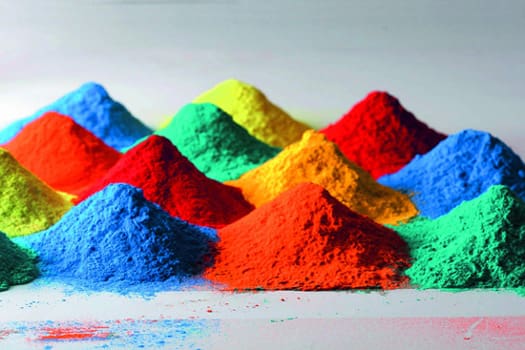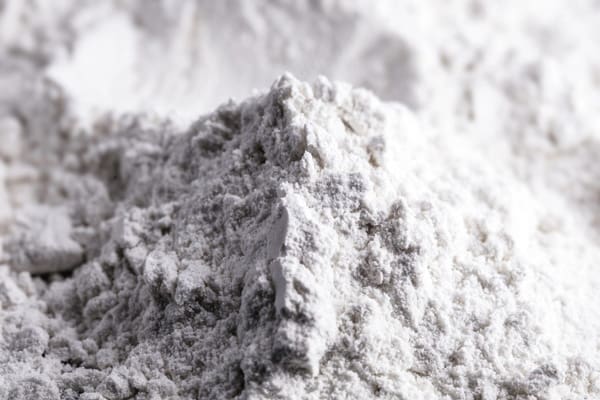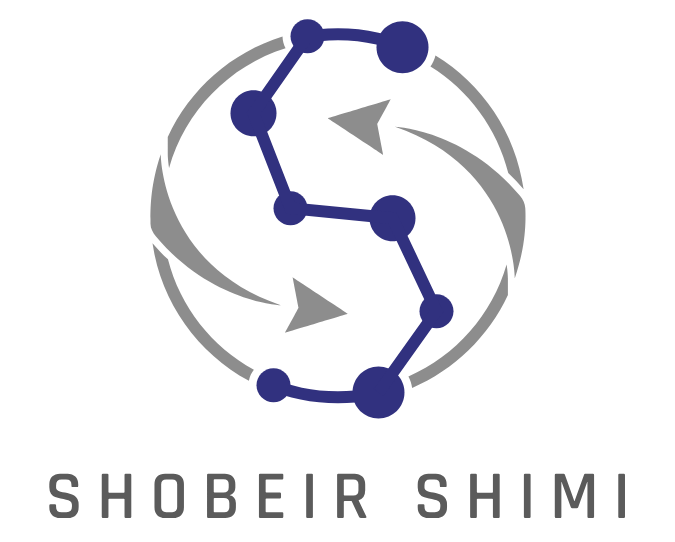Titanium Dioxide Definition
Titanium Dioxide or TiO2 is a beneficial and prevalent substance of crucial value to several industries. Its notable feature of brightness and whiteness is well-acknowledged for being instrumental in the production of coatings, paint, plastic, and cosmetics. The titanium dioxide formula consists of two oxygen atoms attached to a titanium atom. The compound is not only significant due to its coloring properties but also its use in the medical and environmental technology industries. So, is titanium dioxide safe? Despite its widespread use, it is a safety concern, especially when presented in a nanoparticle structure that has health and environmental significance. This paper provides an overview of the chemical composition, forms, main applications, and safety concerns of TiO2.
TiO2 grades
What is Titanium Dioxide (TiO2)?
Titanium Dioxide (TiO2) is a natural oxide of titanium, a transition metal. The chemical composition of titanium dioxide made from titanium (Ti) with two attached oxygen atoms (O) in the form of the stable compound TiO2. The titanium dioxide boiling point is 2,972 °C.
It has a white titanium dioxide powder appearance and possesses a high refractive index, a very effective agent for scattering. TiO2 is extremely resistant to corrosion and stable, and this is among the many reasons why it finds wide application. The material exists in three principal forms: rutile, anatase, and brookite, which each possess unique physical properties and applications. Rutile is the most common and stable form and is applied primarily for pigments, while anatase is predominantly applied in photocatalysis. The physical character of TiO2, including its very white appearance, renders it significant in applications calling for whiteness and opacity.
| Chemical formula | TiO2 |
|---|---|
| Also known as | Titanium(IV) oxide, titania, titanium white, Pigment White 6, CI 77891 |
| Appearance | White solid, insoluble in water |
| Applications | Paint, sunscreen, food coloring |
| E number as a food coloring | E171 |
The Two Main Forms of Titanium Dioxide
Titanium Dioxide (TiO2) exists in two principal forms: pigment-grade and ultrafine-grade (nanoscale), both of which are utilized for various purposes.
Pigment-grade Titanium Dioxide:
Pigment-grade Titanium Dioxide accounts for more than 98% of global production. It is particle-sized to scatter visible light most effectively, and this leads to superior brightness and opacity. Pigment-grade TiO2 is primarily used for paints and coatings, with its addition providing enhanced opacity, durability, and life. Pigment-grade TiO2 is also used in plastics, adhesives, and rubber for light stability improvement and to avoid cracking and fading. In cosmetics, pigment-grade TiO2 is utilized to bleach the skin and cover blemishes with a thin, greaseless film. Besides, it is utilized in paper coatings to increase brightness and opacity, in foodstuffs to guard against degradation, and in pharmaceuticals, where it is utilized for coating tablets and capsules.

Ultrafine-grade (Nanoscale) Titanium Dioxide:
Ultrafine-grade Titanium Dioxide is produced with a very small particle size compared to pigment-grade particles, with unique properties such as transparency and high ultraviolet (UV) absorption. This grade of titanium dioxide for skin is used primarily in cosmetic sunscreens, where it serves as a clear UV absorber that protects skin without the visible residue of a suntan. It absorbs UV radiation rather than reflecting it and thus is most appropriate for sun protection. In addition, ultrafine TiO2 is also used as a catalyst support material, particularly in the automotive industry, for the abatement of exhaust emissions, and in power plants for the removal of nitrous oxide emissions.

How Titanium Dioxide Is Made
Titanium Dioxide is produced mostly from the ilmenite mineral, which is a titanium-iron oxide mineral. The TiO2 production process is through the extraction of titanium from ilmenite ore using industrial methods that separate the titanium content and process it to a form in which it can be used.

Two industrial processes are widely applied to produce Titanium Dioxide: the chloride process and the sulfate process. The chloride process involves the treatment of ilmenite ore with chlorine and carbon to produce titanium tetrachloride (TiCl4). The titanium tetrachloride is purified and subsequently reacted with oxygen to produce titanium dioxide, in rutile form. The sulfate process, on the other hand, involves the treatment of ilmenite with sulfuric acid, which decomposes the latter to produce titanium dioxide. This can be altered to produce titanium dioxide in the anatase form. Both procedures are beneficial depending on the form and purity of desired titanium dioxide.
The other feedstocks used in the manufacturing of Titanium Dioxide are upgraded slag, which is a steel industry byproduct and contains high titanium levels. The use of this byproduct enhances the sustainability and efficiency of titanium dioxide manufacturing. The global production of titanium dioxide is large, with millions of tons produced annually to supply industries such as coatings, plastics, and cosmetics. Some of the key manufacturers of TiO2 include Chemours and Akzo Nobel, which are also prominent companies in the production and supply of titanium dioxide to various industries around the world. Patent activity concerning the manufacture of titanium dioxide is competitive, involving several innovations relating to the optimization of production titanium dioxide processes efficiency, quality enhancement of TiO2, and new uses. Companies continuously work to protect their intellectual property to gain a competitive edge in the global market.
Uses of Titanium Dioxide
Titanium Dioxide is the most diverse of all compounds and has applications across nearly every business. It is perhaps most famously used as a pigment, contributing brightness, whiteness, and strength. As a pigment in titanium dioxide paint and coatings, TiO2 adds opacity and color retention to products, but when utilized in plastics, it serves to protect from UV rays and maintain product integrity. Titanium Dioxide (TiO2) is also utilized in papermaking to increase whiteness and opacity, as well as ceramics and construction materials for strength and durability. TiO2 also finds application in printing inks because of the high quality of its pigment content. The titanium dioxide use demand is heavy across the world, with most demand coming from the paint and coatings sector followed by the plastics and paper sectors. Is titanium dioxide toxicity? TiO2 is used instead of alternatives because it has better light-scattering properties, non-toxicity, and stability, and hence it is a consistent choice in most applications.
Industrial Applications
Titanium Dioxide is a critical element in many industrial applications. When used in coatings and titanium dioxide paint, it is valued for its ability to gain better coverage and opacity, thus creating a color that lasts long. TiO2 is used in plastics to protect against UV degradation, extending product lifespan by preventing fading and brittleness. In the production of paper, TiO2 is added to introduce whiteness and opacity, improving the quality of printed items. The substance is also found in ceramics used to strengthen durability and strength and in construction materials, responsible for the durability of concrete and other construction products. Printing ink also utilizes the application of titanium dioxide because it is bright and has great pigmentation, allowing it to generate very high-quality prints.

Consumer Products
Titanium Dioxide is also present in consumer products, mainly in cosmetics and food items. The titanium dioxide colour is used as a whitening coloring agent in food items (e.g., E171). The appearance of the product is guaranteed to be consistent, and it gives the product a more attractive appearance. Therefore, what titanium dioxide used for cosmetics and make-up, also it is used for the characteristic of covering up and opacity to cover imperfections and to even out the skin color. TiO2 is particularly popular in dermatology for its non-irritancy and for its reflectance of light, a property that has earned its popularity in sunscreens for effective UV protection. Titanium dioxide is also used in pharmaceuticals for tablet and capsule coating to protect against moisture and light and improve cosmetic appearance.

Where Titanium Dioxide Is Found
Titanium Dioxide naturally exists in various minerals, including ilmenite, rutile, and anatase, which are common in the Earth’s crust. Titanium dioxide naturally exists together with various geological formations, often present in sand, rocks, and ores. TiO2 is extracted from these minerals and exists in many natural substances. In addition to its occurrence in nature, titanium dioxide has extensive usage in many consumer goods. Common products that have TiO2 include paints, sunscreens, cosmetics, and foodstuffs. It is also found in paper, plastics, and textiles. In the environment, TiO2 particles result from industrial titanium dioxide processes, particularly where bulk production is being carried out, and these particles find their way into accumulating in soil, water, and air but are normally of low environmental mobility.
Occupational exposure to Titanium Dioxide mainly takes place in industries that produce or utilize the compound in large amounts, including in the production of paints and coatings, the manufacture of plastics, and the paper industry. Individuals working in these sectors could inhale tiny TiO2 particles, especially in dust form, resulting in possible occupational health hazards. As a component of titanium dioxide in food items, it is being extensively utilized as a food additive (E171) in confectionery, chewing gum, bakery items, and sauces, where it also acts as a white pigment. While titanium dioxide is commonly regarded as being safe for consumption, studies on the effects of its consumption in large quantities are ongoing.
Titanium Dioxide Safety Concerns
Titanium Dioxide has been in controversy regarding safety in recent years, especially with growing applications of nanoparticles in consumer products. There is health concern over the potential danger of inhalation or ingestion of titanium dioxide particles, especially in its ultrafine or nanoscale form. The major concern is that when very high amounts of TiO2 particles are breathed in, they may be detrimental to the respiratory system, even causing inflammation and other pulmonary issues. Ingestion of titanium dioxide in food has also been questioned, especially because nanoparticles are more readily absorbed into the body and can merge with tissues.
Despite all these concerns, regulatory agencies from all over the world, like the U.S. Food and Drug Administration (FDA) and the European Food Safety Authority (EFSA), have typically listed titanium dioxide as safe, but with some permissible limits. The current scientific consensus is that, if used in the common applications of cosmetics, food, and medicines, titanium dioxide is not hazardous to human health. There are however studies in progress that are examining the potential long-term effect of exposure, particularly in nanoparticle size, with some countries, such as France, moving towards more severe restriction of its application in foodstuffs.
Potential Health Impacts
Research on Titanium Dioxide has been growing, especially for its possible effects on health owing to its usage in a variety of products. There is growing worry over the inhalation of titanium dioxide side effects particles, especially in the form of nanoparticles, due to the risk of causing respiratory problems. Consistent exposure to a large amount of cutoff powdered TiO2 may result in respiratory problems such as lung inflammation and fibrosis amongst others with greater incidence seen in some occupations. While airborne titanium dioxide is not worrying to the broader public, those employed in paint, plastics, and paper coating industries are at a greater risk.
Persistent consumption of Titanium Dioxide or digested nanoparticles is not fully understood and may lead to concerns regarding the long-term potential negative impacts on organ-specific absorption and accumulation. At low levels, especially in the form of E171 additives, titanium dioxide is regarded as generally safe for ingestion. Even though regulatory authorities like the FDA consider TiO2 to be non-harmful in food products, there is still extensive research revolving around the possible consequences related to chronic average consumption, especially in terms of nanoparticles and large quantities. There seems to be no definitive answer regarding potential consequences on the human body with the body’s heightened exposure to TiO2, however, there remains a risk of increased inflammation and damage to gastrointestinal systems.
For dermal application, it is non-toxic and safe to apply in cosmetics and skincare titanium dioxide chemical formulas, including sunscreens and cosmetics. It acts as a physical barrier against UV radiation without absorption into the skin. It is found in makeup and sunscreens and is titanium dioxide safe in makeup. It is usually considered non-irritating and non-toxic when applied to the skin. However, the titanium dioxide uses of nanoparticle size in cosmetics has some problems since it can penetrate deeper into the skin, although to date, no significant absorption has been proven. Therefore, it remains a product in demand in makeup and titanium dioxide for skin cosmetics due to its safety and protection against deleterious UV radiation.
Titanium Dioxide Alternatives
With the progress of the safety of Titanium Dioxide growing, particularly with its nanoparticle form, scrutiny has begun within the area, leading to an increased interest in other substances that can provide similar benefits without the aforementioned dangers. Basking in the sun is common, but so is the concern of skin safety, something that keeps us from using titanium dioxide but allows the use of Zinc oxide. Zinc oxide, like ti02, is used as a physical blocker of UV rays. Another natural option is magnesium carbonate, which is widely used in the food industry for its whitening abilities but does not possess the same opacity as ti02. Barium sulfate is one such compound, which, while having some negative characteristics like not working as great as titanium dioxide, can still be applied for use as a white pigment.
As regards comparative performance, such alternatives for Titanium Dioxide are not necessarily as brilliant, dense, or protective from UV light as TiO2. Synthetic and natural substitutes may offer satisfactory substitutes in particular applications, but they are more expensive or less effective. Cost and accessibility factors are major motivators for which alternatives prove best suited; titanium dioxide is now the general go-to choice due to its price performance and effectiveness. Application-specific alternatives still need to be found as ongoing research continues to seek ideal replacements for uses such as within foods or pharmaceuticals where non-toxic, non-absorptive products are in high demand.
Market Information
The titanium dioxide price has fluctuated over the last several years due to various factors such as supply chain interruptions, changes in demand, and regulatory issues. Major manufacturers of titanium dioxide such as Chemours, Tronox, and Huntsman have dominated the supply market around the globe. The titanium dioxide prices vary by region because production costs vary by local laws, availability of raw materials, and environmental concerns. The supply of the titanium dioxide market also fluctuates based on major feedstock availability, ilmenite, and rutile, depending upon conditions at the mine. Future TiO2 demand forecast anticipates rising demand over future periods continuing across industries of paint and coating, plastics, and cosmetics following expanding construction, and consumer goods industry development.
Conclusion
Titanium Dioxide is an important material with broad applications across industries including paints, cosmetics, food, and drugs. Though it has great advantages because of its brightness, opacity, and protection against UV rays, there continue to be concerns about its health hazards, mainly when inhaled or ingested as nanoparticles. Regulatory agencies have generally accepted the use of titanium dioxide as safe within established guidelines, but research continues to ensure its safety, especially with novel preparations of the substance. The future of TiO2 is a balance between retaining it utilized within industrial and consumer uses and increasing demand for safer substitutes. As legislation evolves and new technology emerges, the place of titanium dioxide in a variety of markets will likely change, with ongoing research playing an important part in its use that is safe and sustainable.

